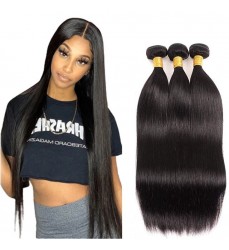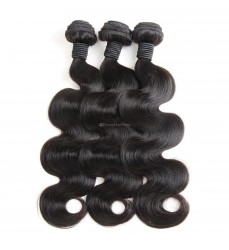How is Weave Hair Made in 8 Steps
Weave hair has become a popular choice for individuals seeking to enhance the length, volume, and style of their natural hair. The creation of weave hair involves a meticulous process that transforms raw human hair into the high-quality Ebony hair extensions that grace heads around the world. Let's delve into the intricate journey of how weave hair is made.

Sourcing Raw Hair: The process begins with the careful sourcing of raw human hair. This hair is typically donated or sold by individuals who have grown and maintained their hair with care. The best quality weave hair often comes from donors with healthy, untreated hair.
Sorting and Cleaning: Once the raw hair is acquired, it undergoes a thorough sorting process. Hairs are organized based on their length, texture, and color to create bundles that will result in consistent and high-quality weave extensions. The raw hair is then cleaned to remove any impurities, such as dirt or oils, ensuring a clean and hygienic product.
Chemical Treatment (Optional): Depending on the desired end product, the raw hair may undergo chemical treatments. This can include processes like perming, coloring, or straightening to achieve specific textures or shades. High-quality weave hair often minimizes chemical treatments to maintain the integrity of the hair.
Wefting: The cleaned and treated hair is then carefully wefted to create bundles. Wefting involves sewing the individual strands of hair onto a sturdy track, creating a continuous strip of hair. The wefted bundles are then reinforced to prevent shedding and ensure durability.
Quality Control: Weave hair manufacturers implement strict quality control measures to ensure that each bundle meets high standards. This involves inspecting the wefts for consistency in length, texture, and color. Any imperfections are addressed before the product moves to the next stage.
Packaging: Once the weave hair passes quality control, it is carefully packaged for distribution. Packaging includes labeling the length, texture, and color of the weave to provide clear information for consumers. Some manufacturers also include care instructions to ensure the longevity of the product.
Distribution: Weave hair is distributed to retailers, beauty salons, or directly to consumers through various channels. Reputable manufacturers work closely with suppliers to maintain the quality of their products throughout the distribution process.
Application and Styling: The final step in the weave hair journey is the application and styling process by the end user. Whether applied by a professional stylist or at home, weave hair offers versatility in styling, allowing individuals to achieve their desired look.
Understanding the intricate process behind creating weave hair sheds light on the craftsmanship and attention to detail involved in producing high-quality extensions. From the careful selection of raw hair to the precise wefting and quality control, each step contributes to the creation of weave hair that enhances the beauty and confidence of those who choose to embrace it.





